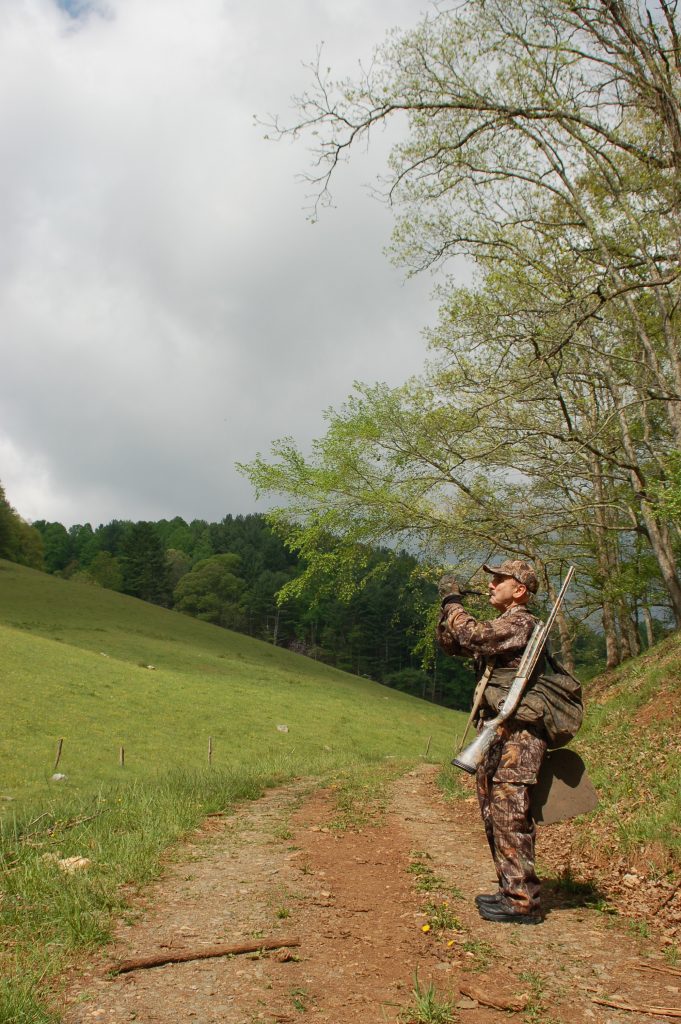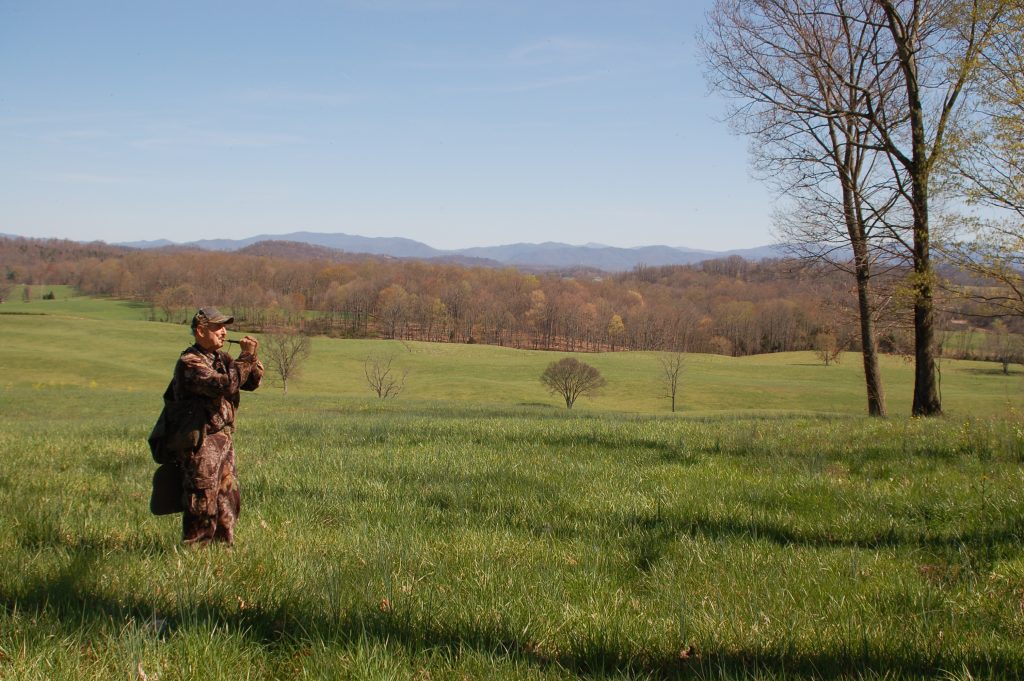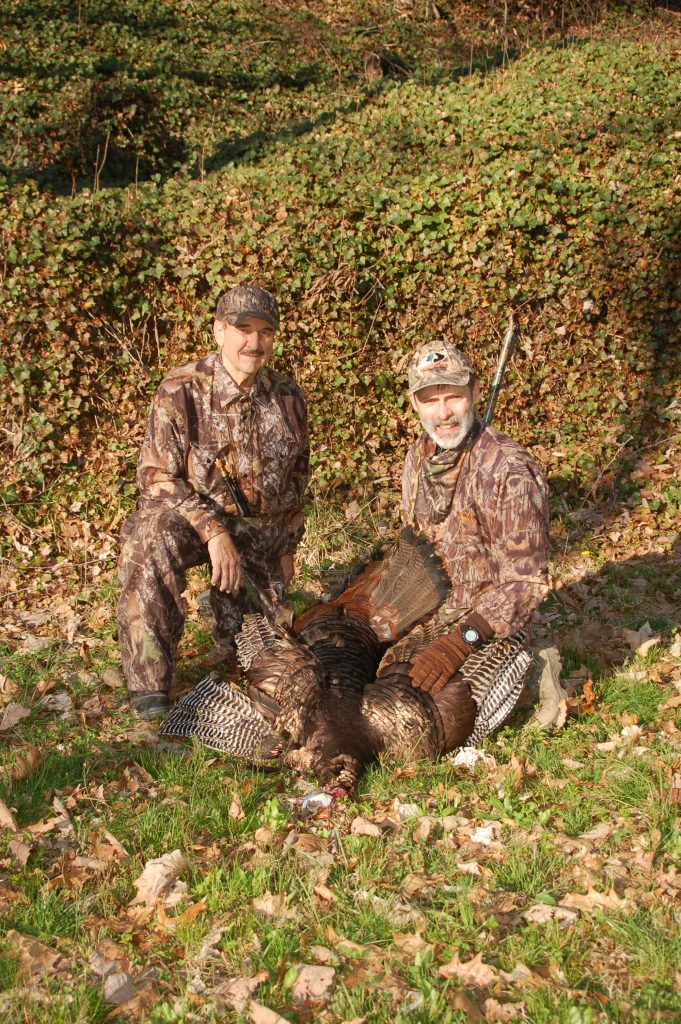Calling that Sucks
Trumpets are gaining in popularity, but many hunters find them difficult to master. Advice from veteran trumpet callers can help.

About 15 years ago, Larry Proffitt and I returned to his house after another successful hunt, during which he had used a Zach Farmer trumpet to call in a longbeard for me. He then recalled the day when he experienced a revelation about suction calls.
“I was curious about which of my calls sounded most like a turkey hen at a distance,” said Proffitt, of Elizabeth, Tennessee. “So, I set up a recorder, moved out about 65 yards and started running a number of calls: long boxes, aluminum and glass pot and pegs, diaphragms and my trumpet. The results were amazing.”
The boxes, pots and diaphragms sounded fine, although the recorder barely picked them up, and they sounded far off.
“But there was ‘real hen’ inside the trumpet, and the sounds came in loud and clear,” Proffitt said. “Trumpet sounds do seem to carry a lot farther than those from any other call.”
Proffitt then shared an anecdote from Fall 1994 in West Virginia, when he was first learning the intricacies of suction calls.
“I sent out several yelps with a trumpet, and five longbeards came running down the mountain toward me,” he said. “It was stunning, but I had enough sense to shoot the first one that arrived. The Native Americans invented the wingbone call, and they also coined the phrase big medicine, meaning someone or something had something inside that was really powerful. Well, trumpets contain big medicine.”
Operating a Trumpet
Although suction-type calls can produce incredibly realistic sounds, they are not easy to learn to operate for many people. In fact, some folks struggle to ever run one.
“I really have trouble explaining to someone how to use a trumpet,” Proffitt said. “The rhythm is very difficult to develop. Maybe the best approach is to start with basic yelps. Fold one hand around the bottom of the call, and mouth out and space out, ‘kelk, kelk, kelk. If you want to turn the yelps into cutts, speed up your rhythm and run the kelks together like, ‘kelk-kelk-kelk.

“To cluck, mouth the word ‘tuck.’ Fast clucking with the excited yelping of a hen turkey will often get a spring gobbler in trouble. Overall, the straight cluck is probably the easiest to learn. I really recommend the Real Turkeys CDs by Lovett Williams. They will help you learn the voice and vocabulary of wild turkeys. I often listen to them in my truck so I can have the rhythm of hens and turkeys constantly being imprinted.”

Pennsylvania’s Ralph Permar custom-makes trumpets and often tutors people on how to run this call.
“Learning to use a trumpet is just like learning how to play a musical instrument,” he said. “Some folks become proficient really easily, and some take a lot longer. Part of learning how is imitating the rhythm of real turkeys when they call. Turkey hunters have that rhythm in their heads. They just need to put it into their calling.”
Permar said callers should operate a trumpet by drawing in air through the back of their throat and diaphragm.
“You don’t want to suck in with your mouth like you were sucking a straw,” he said. “You want to coordinate the tension you put on your lips and the way you draw in air, plus the way you manipulate your fingers on the end of the call. Increasing or decreasing the air you draw in is part of how you change from one type of sound to another.”
Permar believes hen yelps and clucks are the sounds that hunters can master first. Then they can graduate to cutts, which are basically just excited, rapid yelps. When hunters learn those sounds, they can begin to witness how effective trumpets can become.
“Some people say that trumpets work so well because turkeys often haven’t heard one before,” Permar said. “But I don’t think that’s why they’re so effective. I believe it’s because trumpets make such realistic sounds. And when hunters start having success with trumpets or any calls, they tend to use them more.
“My go-to call is a trumpet, and right now, I have three of them in my call bag: a model that I’m experimenting with; the 1930, which is a highpitched, raspy call; and the Roanoke River Basin, which is of my own design and has a lower pitch.”
Proffitt believes the fact that few hunters use a trumpet is an important reason why the call ranks supreme.
“If you go to a place that has a lot of hunting pressure, a yelp from a trumpet will make it seem like a whole new hen has come into the area,” he said. “I think that this unique sound will sometimes make a turkey stay in the area longer and come in closer. Those can be really important advantages whether you’re hunting in spring or fall.”
Proffitt likes Farmer’s creations but said other folks also make quality trumpets.
“I’ve used Billy Buice’s trumpets for years,” he said. “They have interchangeable mouthpieces, which render different turkey voices, which is especially nice when you’re hunting mature fall gobblers. Ralph Permar, Clay Townsend and Steve Turpin all make outstanding trumpets, and Mark Sharp is the creator of some of the best wingbones I’ve ever seen.”

Last Words
“Nothing works all the time,” Proffitt said. “But I’m still looking for an edge, and the trumpet works better than any other call I’ve ever used. Yes, I know a trumpet is difficult to master. Thus, many hunters try them a few times and then give up, deciding that they have all the calls they need to be successful. That mindset just makes it better for people who use trumpets. I value some of my trumpets so much that I even keep them in a gun safe.”